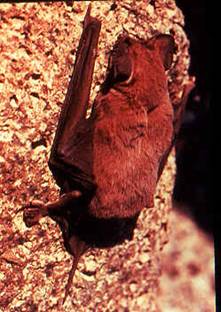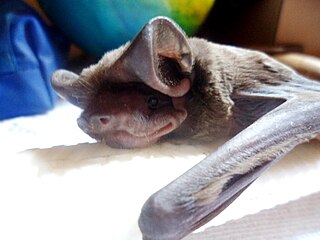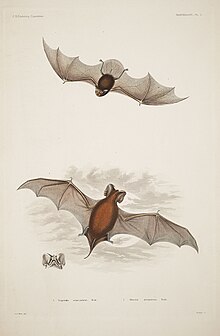
The Molossidae, or free-tailed bats, are a family of bats within the order Chiroptera. The Molossidae is the fourth-largest family of bats, containing about 110 species as of 2012. They are generally quite robust, and consist of many strong-flying forms with relatively long and narrow wings with wrinkled lips shared through their genus. Their strong flying form allows them to fly 60 miles per hour using tail winds and at altitudes over 10,000 feet. This makes them unique among bats, as they are the only bat family that withstands the elevation. They are widespread, being found on every continent except Antarctica. They are typically found in caves, abandoned mines, or tunnels.

Wagner's bonneted bat or Wagner's mastiff bat, is a species of bat in the family Molossidae. It is found in the Americas from Argentina and Peru north to Mexico, and Cuba. Populations in Florida in the United States are now recognized as the Florida bonneted bat

The broad-eared bat or broad-tailed bat is a species of free-tailed bat from the Americas.

The big free-tailed bat is a bat species found in the Americas.

Kalinowski's mastiff bat is a species of bat in the family Molossidae, the free-tailed bats. It is native to Peru and northern Chile. Relatively little is known about the species, but it is thought to be common in its range. It is sometimes seen in urban areas. Molecular sequencing data indicates that the closest relatives of M. kalinowski are members of another genus, Nyctinomops.

The pocketed free-tailed bat is a species of bat in the family Molossidae found in Mexico and in Arizona, California, New Mexico, and Texas in the United States. They resemble the Brazilian free-tailed bat but differ morphologically. They are recognized as "least concern" by the IUCN and as "apparently secure" by Natureserve.








